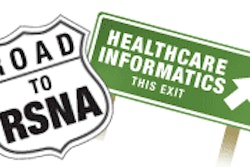This past April, in an effort to "reduce medical errors, improve quality, and produce greater value for healthcare expenditures," U.S. President George Bush signed Executive Order 13335, establishing the position of national health information technology coordinator. In a subsequent secretarial summit on health information technology (HIT), U.S. Department of Health and Human Services (HHS) Secretary Tommy Thompson appointed Dr. David Brailer to the newly created post.
The coordinator's responsibilities include developing, maintaining, and directing the implementation of "a strategic plan to guide the nation's implementation of interoperable HIT in both the public and private healthcare sectors," according to HHS. The department wrote that this plan will:
- "Advance the development, adoption, and implementation of healthcare information technology standards nationally through collaboration among public and private interests, and ensure that these standards are consistent with current efforts to set HIT standards for use by the federal government;
- Ensure that key technical, scientific, economic, and other issues affecting the public and private adoption of HIT are addressed;
- Evaluate evidence on the benefits and costs of interoperable HIT and assess to whom these benefits and costs accrue;
- Address privacy and security issues related to interoperable HIT and recommend methods to ensure appropriate authorization, authentication, and encryption of data for transmission over the Internet;
- Not assume or rely upon additional federal resources or spending to accomplish adoption of interoperable HIT; and
- Include measurable outcome goals."
Responding to these mandates as set forth by the HIT executive order, the national health information technology coordinator has formulated an approach outlined by four distinct goals, to be accomplished by employing 12 related strategies.
Goal 1: Inform clinical practice -- bringing the electronic health record (EHR) to clinical practice.
- Provide incentives for EHR adoption.
- Reduce risk of investment in EHR.
- Promote EHR diffusion in rural and underserved areas.
Through technological innovation, accessibility to necessary information would greatly increase healthcare quality. The premise behind this goal is that a user educated in these potential benefits will help to expand the market, facilitate widespread adoption of technologies such as the electronic medical record (EMR), and provide a more robust business case for further technological implementations. The incentive development aspect is where manufacturers and healthcare providers should be seeking potential, easily obtainable, and quantifiable assistance with implementations.
Goal 2: Interconnect with clinicians.
- Collaborate regionally.
- Develop national health information network.
- Coordinate federal health information systems.
Implementing technology that does not advance common goals would obviously impede healthcare delivery rather than streamline it. Accordingly, the interconnectivity goal will be fostered through development of vast networks, national, regional, state, and local programs, as well as continued efforts to standardize information exchange.
Goal 3: Personalize care
- Encourage use of personal health records.
- Enhance informed consumer choice.
- Promote use of telehealth.
As has been noted for some time, lack of personal responsibility for one's healthcare can be cited as contributing to some of the more significant problems in the healthcare delivery industry. By providing greater access to personal health information and facilitating consumer education on resources and available options, those whom the industry seeks to serve can become a healthier, more informed market.
Goal 4: Improve population health.
- Unify public health surveillance architectures.
- Streamline quality and health status monitoring.
- Accelerate research and dissemination of evidence.
U.S. government agencies have placed significant effort in identifying and implementing standards to facilitate the exchange of information. The Centers for Disease Control (CDC), the Department of Defense (DOD), and the Department of Veterans Affairs (VA) have participated in implementations directed at providing a broader range and higher quality of care.
In an effort to protect the public from health risks, information must be shared through secure means, and then processed accordingly, to achieve a public-health surveillance structure that ultimately covers the gamut from dramatic public health threats to evidence-based treatment methods.
The HIT strategic framework implementation is set to follow a three-phased approach: development of market institutions, investment in clinical management tools, and transition to market.
Without question, this executive action will benefit the entire industry. The remaining question, however, is how expeditiously these benefits will reach the various members of the healthcare delivery community, and how long it will take for all players to jump on the proverbial bus.
As with most governmental actions, bureaucratic red tape and administrative process will inevitably slow the entire shift. Bureaucratic delays, coupled with an industry that can often be resistant to change, could initially produce an effort akin to herding three-legged cats.
The good news is that much needed fiscal relief, or at least hopes of assistance, is on the horizon in one form or another. By developing incentives for adoption and utilization of information technology, whether through mechanisms resulting in savings, in affirmative reimbursement activities, or direct financial assistance, this is an idea that has come, gone, and has risen again.
The executive branch's efforts appear to have great support by those in a position to facilitate change. In his testimony given before the U.S. House Committee on Government Reform, former Speaker of the House Newt Gingrich highlighted the grim reality of contemporary U.S. healthcare.
According to statistics obtained from the CDC, more than 44,000 people die in hospitals each year as a result of medical errors. Although the former Speaker cited "ignorance" and "lack of individual involvement" as contributing factors to the bleak state of U.S. healthcare, the focus of his testimony centered on the prospective use of information technology and its overdue application within the healthcare industry.
Gingrich gave illustrated examples of successful HIT solutions to date, including the use of a computer-prescribing module implemented to reduce medical errors and streamline related workflow at Oregon Health and Science University Hospital in Portland. He also recognized the bar-coding program at Sutter Health in Sacramento, CA. The program was implemented to reduce the 12.9% error rate in the approximately 32 million doses prescribed annually in its healthcare network. Also cited was the comprehensive medical record and ordering system used by the Mayo Clinic of Rochester, MN, which has resulted in an annual savings of $21.7 million.
As of July 2003, only 10% of the hospitals in the U.S. had adopted EMRs. Gingrich cited the lack of direct consumer demand and lack of financial incentive or reward for IT investors as contributing to the slow pace of information technology implementation in the healthcare industry.
The challenge, which the HHS' Brailer is now officially facing, is to retain enough momentum to encourage large and small players in the industry to step up and become active in many of the activities laid out by the government.
The endeavor includes several HIT-specific initiatives, including (but by no means limited to) the following activities:
- National Health Information Infrastructure initiative to improve healthcare quality and efficiency on a national level.
- Consolidated Health Informatics Initiative (CHI) to establish standards for interoperability on a national level, for electronic health information transfer.
- EHR Acceleration Efforts, initiated by the Council on the Application of Health Information Technology (CAHIT) to facilitate promotion and acceleration of the EHR.
- Centers for Medicare and Medicaid Services (CMS), addressing self-referral regulations, and ultimately removing legal barriers that prohibit the integration of technologies that would allow physicians to participate in and facilitate communitywide health information systems.
- Bar code regulations set forth by the Food and Drug Administration for standardizing pharmaceutical labeling.
- VA's VistA (digital imaging and EHR).
- Joint (VA and DOD) Patient Electronic Health Record (JPEHR).
Recently, in his October 13, 2004 debate with Senator John Kerry, President Bush reiterated the importance of the HIT initiative, recognizing that as a country the U.S. has worked to benefit from technological advances at an increased rate in every industry except healthcare.
Hopefully, due to the extensive efforts placed in the initiative thus far, the healthcare industry will be unaffected by the results of the recent presidential election. It is wishful thinking, perhaps, but still a call to arms for manufacturers, clinicians, and healthcare recipients to band together and push the industry to the next level of quality and efficacy.
By Kris Knight
AuntMinnie.com contributing writer
November 26, 2004
Knight is general counsel and director, regulatory services for Arlington, TX-based SG&A Consulting. The privately owned firm has provided radiology image management, network infrastructure, and standards knowledge to healthcare provider institutions for PACS, mini-PACS, and teleradiology projects since 1984. For further information, SG&A Consulting can be contacted at (817) 277-2558 or via the Web at www.sgaconsulting.com.
References
U.S. Department of Health & Human Services, Health IT Strategic Framework
U.S. Department of Health & Human Services, HHS Fact Sheet 0 HIT Report-At-A-Glance
U.S. Department of Health & Human Services, Health IT Strategic Framework
Testimony from former Speaker of the House Newt Gingrich, Wednesday, July 14, 2004; Health Informatics: What is the prescription for success in intergovernmental information sharing and emergency response?
Related Reading
Federal government to push for paperless hospitals, May 7, 2004
Bush creates health information technology post, April 28, 2004
White House called lax in enforcing medical privacy, April 13, 2004
Analysts offer advice on keeping HIPAA security compliance simple, March 12, 2004
Bush wants to move U.S. medicine into information age, January 27, 2004
Copyright © 2004 SG&A Consulting



















